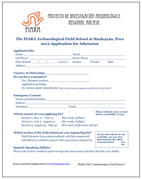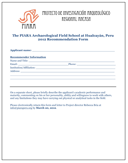Welcome
to the PIARA Archaeological Field School
Join PIARA in the spectacular Andean highlands of Peru! We offer an exciting field school course, Analytical Methods in Bioarchaeology and Archaeology, where students focus their studies on a particular analytical specialty in addition to gaining experience in fundamental skills in laboratory analysis and archaeological site recording. In this course, you will analyze human remains and/or artifacts excavated from prehistoric tombs and a monumental temple complex at Hualcayán. You will focus part of your studies on one of the following methodological concentrations: bioarchaeology or artifact analysis. Students will also receive introductory training in Geographic Information Systems (GIS) and 3D mapping with photogrammetry. Students who participate in the field school will thus not only learn the essential skills required of bioarchaeologists and archaeologists (mapping, artifact processing, etc.), but also gain exposure to a range of specialized methods that are shaping innovations in the field today. During the field school, participants will live and work with the rural, bilingual Quechua/Spanish-speaking community of Hualcayán (highland Ancash, Peru), which facilitates an important component of the field school: learning to ethically and respectfully conduct research on the remains of other people’s heritage through community collaboration. Finally, students will travel to important archaeological sites and museums in three cities and visit stunning natural features likes high altitude lagoons. The field school is open to both students and non-students, but all participants will receive six credit hours from the Universidad Nacional Santiago Antúnez de Mayolo (Huaraz, Peru).
Since 2011, nearly 200 students have completed the PIARA archaeological field school at Hualcayán in Ancash, Peru. These students came from all over the world including the United States, Canada, England, Scotland, Venezuela, Australia, and China. This work has resulted in several undergraduate and masters theses and professional conference posters. In addition, approximately 40 Peruvian undergraduate students from UNASAM university in Huaraz and San Marcos University in Lima have completed practicum training at Hualcayán, culminating in eight final year thesis projects.
Hualcayán is located in the stunning Cordillera Blanca mountain range of the Peruvian Andes, situated below the famous Alpamayo glacier in the Huascarán National Park: a UNESCO World Heritage Site protected for its rare beauty and unique ecosystem. We invite you to come experience this amazing landscape, its people, and its ancient past.
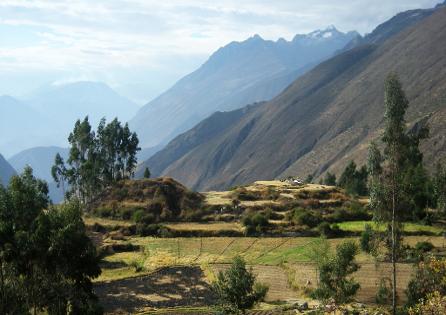
What You Will Learn
The course Analytical Methods in Bioarchaeology and Archaeology is a unique, intensive learning experience that provides detailed training in a variety of important methods. Students will split their time between learning general laboratory techniques and concentrating on their chosen analytical method. They will also attend lectures, have open lab time, and discuss readings on Andean prehistory, human osteology, and artifact analysis.
Through both targeted training and daily practice, students will learn basic and advanced bioarchaeological methods, how to properly conserve archaeological materials, draw plan maps and profiles of above-ground tombs, and digitally record and visualize data using iPads in the lab. Students will also attend workshops in GIS and 3D Photogrammetry, artifact processing, analysis, and illustration, human skeletal analysis, total station mapping, and soil flotation. At the end of the field school, students will present the results of a group project based in either bioarchaeology or artifact analysis.
Before the course begins, students will choose one of the following concentrations: 1) Bioarchaeology or 2) Artifact Analysis.
- Prior knowledge of human osteology or artifact analysis is not required. However, we will tailor your experience to your comfort level. For example, students with advanced knowledge in osteology will delve into more complex methods, such as transition analysis and pattern interpretation of cranial wounds, while students with beginner level knowledge can devote ample time to learning skeletal biology and foundational bioarchaeological techniques.
- All students will experience hands-on learning with both fragmentary and complete bones and pots. The lab will be open for at least 12 hours every day (8am – 8pm), and students may spend free time learning on their own or assist staff members with their research projects.
- There will be opportunities for daily interaction with our digital inventory and research databases. Instruction will emphasize critical thinking, problem-solving and theoretically-driven research.
- At the end of each week, a portion of the workday will be devoted to an ethics discussion.
Concentration 1: Bioarchaeology. Students will focus their studies on the analysis of over 11,000 bones and fragments of human skeletal remains excavated from ancient tombs across the site. PIARA has an incredible sample of mummified and non-mummified remains. Students will develop and/or refine their ability to: identify human bones, estimate the sex and age-at-death of individuals, recognize taphonomic alterations, and document the minimum number of individuals (MNI) present in commingled contexts. They will also learn more advanced bioarchaeological analysis skills by documenting ancient diseases and nutritional deficiencies (paleopathology), identifying evidence for accidental and violent trauma, and recognize the techniques of treanation and cranial modification. Students will also reconstruct mortuary practices at Hualcayán through a consideration of funerary architecture, body position, context, entomology, and material association (textiles, ceramics, metal objects, and macrobotanical remains). Finally, students will learn the proper techniques for the cleaning and curation of skeletal materials and attend lectures on a variety of topics, including isotopic and genetic analyses.
Concentration 2: Artifact analysis. Students will analyze excavated artifacts from Hualcayán to construct and interpret artifact assemblages across space and time. PIARA excavations have amassed an extensive and varied artifact collection from a variety of contexts and prehistoric periods. Students will learn to perform detailed attribute analysis on these artifacts and introductory training in the identification of lithics and textiles. Training will include illustration, photography, and methods of curation/reconstruction/restoration. Students will also learn to process soils through fine-screening and flotation in search of small artifacts and macrobotanical remains. Participants will process materials from past excavations in our field laboratory with more than 10,000 artifacts.
Students will also receive training in the following activities (though they may opt out):
Supplementary training 1: Geographic Information Systems (GIS). Students will learn how to collect, manage, process, and analyze spatial data using total station and GIS software. In the field, students will document environmental and architectural features using total stations and GPS units (survey) and perform attribute analysis of these features (landscape and architectural analysis). Data processing of these data in the laboratory will introduce several GIS techniques and analyses that are commonly employed in archaeology. In the lab, students will import, create, and manage spatial data, learning to: georeference maps, photographs, and satellite images; manipulate, generate, and convert different types of spatial data such as shapefiles, DEMs, and TINs; and process these data for 2D and 3D visualization. Students will also learn to manage and visualize excavation data in GIS. All students interested in these workshops must bring a laptop in order to participate in GIS activities. Instruction will focus on the open source application QGIS, but students wishing to learn using ArcGIS may do so if they arrive with a pre-installed version and student license.
Supplementary training 2: 3D Photogrammetry. Students will learn how to produce 3D models of spaces and objects through photogrammetry techniques. In particular, students will learn how to properly take and then process photographs using the program Agisoft Photoscan. Students will work in groups on project computers with licensed copies of Photoscan, or they may install a 30 day trial immediately before flying to Peru (the trial can only be installed once on any given computer). Training will cover creating models of architectural spaces, and portable artifacts. Students participating in GIS workshops will also learn to create georeferenced photogrammetry orthophotos and import them into a GIS.
In addition to laboratory work and workshops, assigned readings and lectures will introduce core knowledge about Andean prehistory.
For the final project, students will conduct original research in groups—data collection or analysis based on a topic specific to each student’s chosen concentration. They will then prepare a final presentation that synthesizes the group’s findings.
Community Collaborations are also an important part of the student experience. Students will learn what it means to work with and live in a rural Andean community. They will not be isolated from local people in their daily endeavors: young adults from Hualcayán, as well as Peruvian students from the Universidad Nacional de Ancash - Santiago Antúnez de Mayolo (Huaraz, Ancash, Peru), will work alongside us, which provides a robust intercultural learning experience. In this pursuit, students learn how to ethically and respectfully conduct research on the remains of other people’s heritage—by collaborating with them.
Beyond collaborations in daily lab work, students will also contribute to heritage, education, or wellness-focused projects in the Hualcayán community. At minimum, all students will spend the equivalent of one full day (8 hours) working on these projects. The details of this work will depend on the community's expressed needs and may include doing educational activities in the school, implementing projects in the community museum, cleaning up trash in the village with the school children, painting buildings, assisting in a harvest, cataloging donated library books, or working with PIARA to prepare or host heritage-focused events.
All students will receive six credit hours from the hours from the Universidad Nacional Santiago Antúnez de Mayolo for successfully completing the course.
We invite you to explore the exciting Andean past, learn advanced archaeological methods, and experience traditional Andean culture at Hualcayán with us this summer!
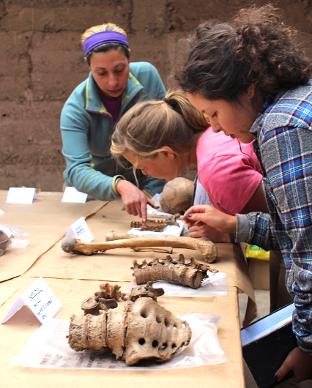
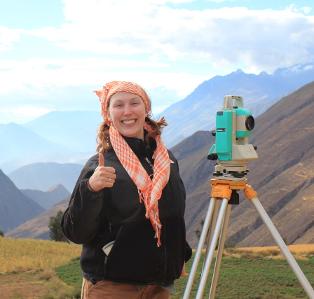


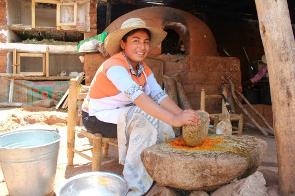
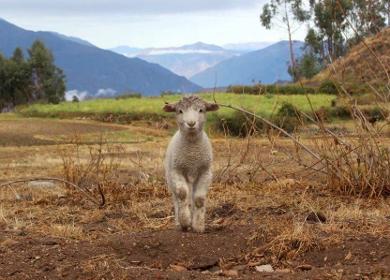
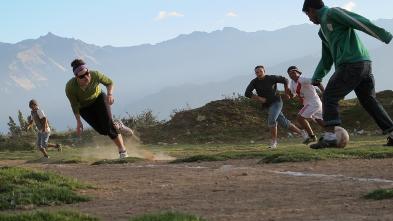
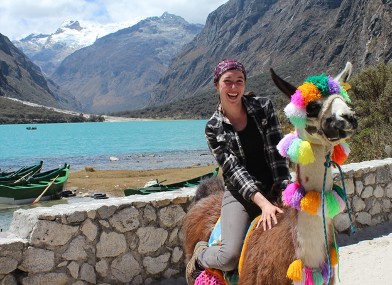
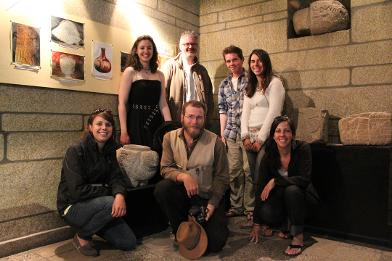
Schedule of Activities
You will fly into Lima the day your session begins. Depending on what time you fly in (many flights into Lima arrive late), this day can be spent relaxing in the hotel, acclimating to your new environment, or exploring the Miraflores neighborhood on your own. The second day we will spend in Lima visiting the Museo Nacional de Antropología, Arqueología e Historia del Perú and the archaeological site and museum of Huaca Pucllana. Students will also have time to shop for any last minute necessities. To kick off the field season we will also treat you to a banquet-style lunch where students can try many world-renowned Peruvian dishes.
We will spend the third day busing to Caraz (~10 hours, located at 2285 m/7497 ft) and students will have time to explore the local market and begin acclimating to the altitude before heading up to Hualcayán early on day four (1.5 hours from Caraz, located at 3150 m /10,335 ft). Caraz is a beautifully preserved colonial town with a pleasant atmosphere and warm climate. Caraz is known for its bakeries, sweets, and ice cream, and there are pharmacies and internet cafes to do last minute shopping and emailing before heading to Hualcayán. In Caraz you will experience the coming together of rural and city life.
All field and laboratory activities will take place within the modern village and community of Hualcayán. We will work Monday through Friday each week between 8 am and 5:00 pm with an hour break for lunch, and Saturdays will be half days from 9 am to 1 pm and often dedicated to workshops. We will have a cook who serves breakfast at 7 am and dinner at 7 pm each day. Sundays will be a day of rest to do as you please, such as hike to nearby natural or archaeological features, wash clothes, watch or play soccer games in the plaza, watch movies, or just read and relax.
At the end of the project we will have a party featuring a pachamanca feast, a traditional Andean-style barbecue cooked in the earth with hot stones. This will give you an opportunity to thank community members for their hospitality and celebrate all the hard work accomplished!
After we leave Hualcayán, we will take a two-day mini tour of the region. First, we will visit the archaeological sites of Wilcahuain and Ichic Wilcahuain. We will then travel to the city of Huaraz, the regional capital of Ancash, which will serve as our base for visiting the incredible archaeological monument of Chavín de Huántar. The final day you may visit the Archaeological Museum in Huaraz or visit the thermal mineral baths of Monterrey. Huaraz has exciting nightlife and a wide and eccentric range of bars and restaurants with local and international food as well as several cafes. Huaraz is always filled with adventure travelers from all over the world. Finally, we will have an end-of-season celebration in Huaraz with alpaca burgers at Creperie Patrick.
Room and Board Arrangements
You will live in the heart of Hualcayán, a traditional Andean bilingual Quechua/Spanish-speaking farming community, providing an immersed cultural experience. Hualcayan has around 400-500 people. Local people grow quinoa, potatoes, snow peas, beans, and wheat, and raise animals such as pigs, cows, chickens, and guinea pigs (called cuy). In 2012, PIARA constructed a project house with a large lab space, kitchen, bathrooms, basic showers, and several spacious sleeping quarters. This adobe and concrete building is a ten-minute walk from the archaeological site and will serve as our home, kitchen, classroom (with projector) and laboratory.
All participants are required to bring their own sleeping bag and sleeping mat for the floor (accepted applicants will receive a detailed supply list). Hualcayán has a beautiful view of the Callejón de Huaylas valley, and has several other archaeological and natural features within a short walking distance from the village including a waterfall, and students are encouraged to explore the area during free time. We also have a library of archaeology books to read and reference.
In the evenings at Hualcayán we will have a movie projector and movies to choose from. We also have a courtyard where you can socialize (or have an impromptu dance party!). A telephone will be available to make and receive international calls, but students are encouraged to arrive with international plans on their personal phones. Chores will rotate and include helping our cook prepare dinner, dishwashing, boiling water, getting lunch ready for the field, bathroom duty, and sweeping. Participants must be willing to live in close quarters with others (including Peruvian students who may not speak English), have a general attitude of cooperation, and have fun while working hard! Prior Spanish or Quechua language training will enrich this experience, but this is not a requirement as the course is instructed in English or Spanish.
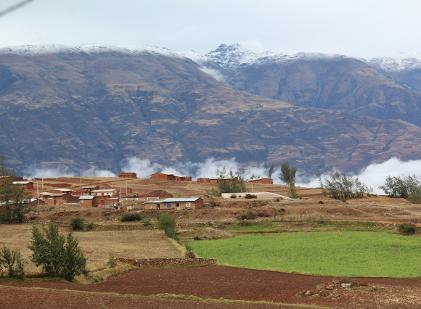
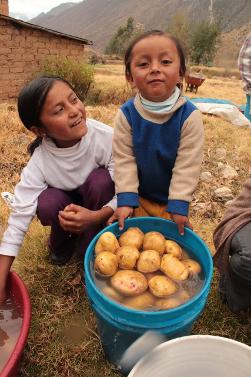
Cost
The PIARA program fee includes archaeological and bioarchaeological training, course credits, travel within Peru to important archaeological landmarks and museums, and hotel stays while traveling to these destinations. The total cost is $3000.
Fees
include:
* Six credit hours from the Universidad Nacional Santiago Antúnez de Mayolo.
*
All instruction and supplies
*
All bus transportation within Peru between Lima, Caraz, Huaraz, Chavín, and Hualcayán
* All meals and housing during the field school at Hualcayán
* Hotel accommodation in Lima (2 nights), Caraz (1 night), and Huaraz (2
nights) at the beginning and end of the field school
* Entrance fees and transportation to museum and archaeological site visits
* Three special restaurant meals in Lima, Caraz, and Huaraz
* Hardcover notebook and assigned readings
Fees do not include:
* Roundtrip airfare to Lima, Peru, health/travel insurance,
vaccinations, passport/visa fees, airport taxes, taxi to/from Lima hotel
(although we will arrange this for you), personal spending money for snacks, phone cards
* Sleeping bag, sleeping mat, and clothing for warm days and chilly nights
* Personal medicines, vitamins, sunscreen or other necessities (we will have
first aid supplies)
* Gardening or work gloves that fit your hands well (i.e. not too much extra
fabric at the tips) for outdoor excursions in areas with thorny brush.
*
Small solar charger for daily charging of personal items like cameras and iPods
(optional; we will have electricity but we like to reserve current for necessary field equipment, computers, water
boilers, etc.)
*
Food during free time in Lima, Caraz, and Huaraz
* Any additional snacks or drinks
*
Any individual travel throughout Peru before or after the field school
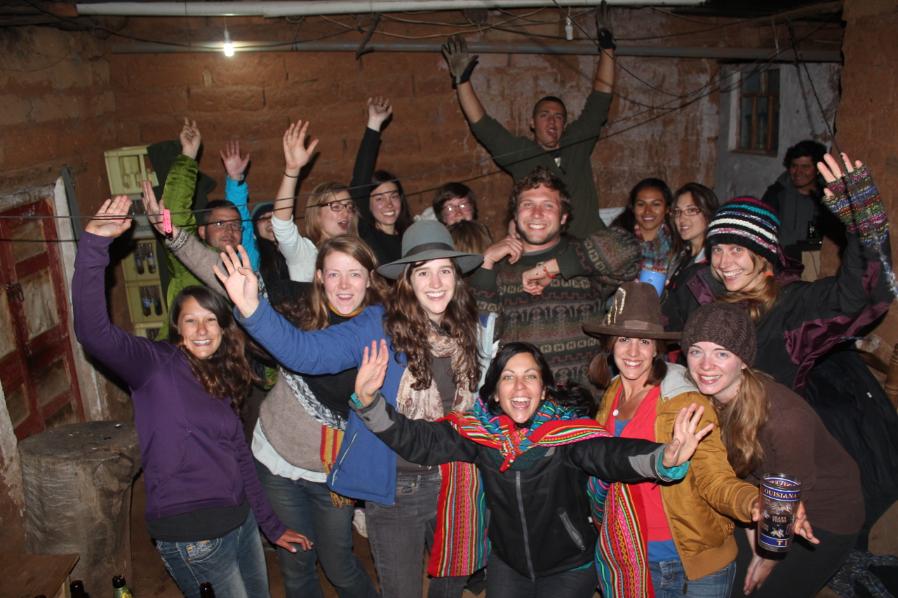
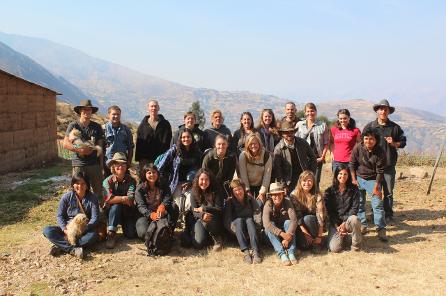
Fostering a Safe Work Environment
PIARA is committed to maintaining a safe and inclusive working environment for all participants. Please review our policies and expectations for acceptable behavior. We have a zero-tolerance policy for sexual or gender-based discrimination or harassment. Please download and read our policy.
Field School Scholarships
The Archaeological Institute of America offers a few competitive scholarships for field school participants: http://www.archaeological.org/grants/708 and PIARA applicants are encouraged to apply as we have had successful recipients in the past. Also, please inquire immediately within your own university about summer research travel funding; deadlines for competitions often occur in early Spring.
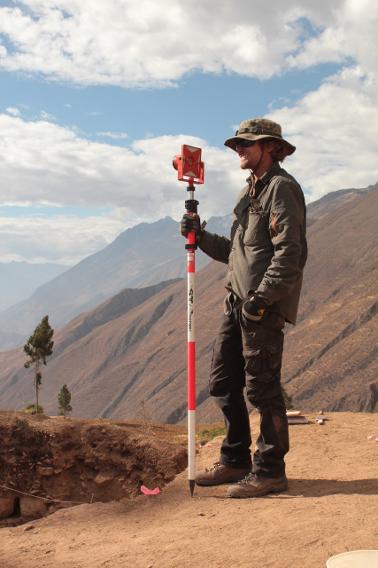
Testimonials
"The PIARA field school was the perfect place to combine my love of the outdoors with hands-on archaeological experience. I gained practical skills in excavation, mapping, and laboratory analysis that leave me feeling prepared for the job market or graduate studies. I was also able to test out my Spanish skills with the local community and loved exploring the surrounding Andes. I highly recommend this field school!" -Jillian Richie
"As an aspiring biological anthropologist, I was looking for a field school that would give me hands-on experience with skeletal analysis. The PIARA field school provided an amazing opportunity to take my knowledge far beyond what I had learned in textbooks. I strengthened my analysis skills and also learned the field methods necessary to conduct bioarchaeological excavations. Hualcayán is the perfect location to explore the outdoors, engage in Peruvian culture, and experience what archaeology is really like!" -Shaina Molano
"This experience has not only given me the technical skills necessary for future employment, but also an understanding of how to conduct research in the field. Hualcayán is a stunning location to work in and explore, and the field school was affordable. You won't find a more authentic and informative experience than this!" -Sam Hutchins
How to Apply
Applicants must be at least 18 years or older and have successfully completed one year of full-time college or university studies.
1. Download, fill out, and email the application form.
2. Have a professor email a brief letter of recommendation with the recommendation form attached to the email.
3. Email an unofficial (digital/scanned) copy of your latest or final university transcript.
4. Send in a $500 deposit within 7 days after you are notified of your acceptance.
All applications, recommendations, and unofficial transcripts must be sent electronically to the 2020 PIARA managing director Emily Sharp at piaraperu@gmail.com.
Note: Be sure to download each form before filling it out as changes made to these forms in the browser will not be saved upon download.
The application deadline is rolling, so interested students should submit their application as soon as possible, as space is limited. Applications will be reviewed for acceptance as they are received until the sessions are full. Qualified applicants who have completed steps 1-3 above will be notified of their acceptance within one week of sending in all application materials. The PIARA director may request a phone interview with applicants before acceptance. If you are accepted, completing Step 4 will secure your place in the field school. You may send in your application before your recommendation has been sent in by your professor, but please contact them as soon as possible so that your application can be processed without delay.
All participants must send in their final payment within four weeks of the date of their acceptance. Extensions to this deadline will be made in special cases if financial aid arrangements delay funds or for other extenuating circumstances. Such a case must be discussed with PIARA 2020 director Emily Sharp in advance of the deadline.
All application materials should be submitted electronically to piaraperu@gmail.com.
Translate This Page
All PIARA artwork, photos, and web and flyer designs are copyright © Rebecca E. Bria and PIARA


